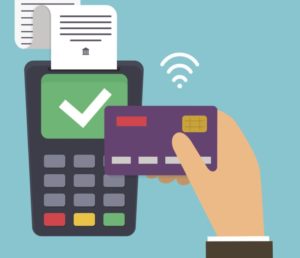Juniper Research has released a new report that demonstrates how COVID-19 has changed people’s purchasing habits. The report found that the use of contactless cards went up dramatically during the pandemic, with the total value of contactless card transactions jumping from $1.7 trillion in 2020 to an anticipated $2.5 trillion in 2021.

That $2.5 trillion figure represents 79 percent of all contactless transactions for the year, which makes cards the most popular method for those making contactless purchases. That trend is expected to continue into the future, especially as biometric payment cards allow financial institutions to raise payment caps without sacrificing security.
In the meantime, Juniper credited the sudden spike in contactless card transactions to increased penetration in major markets that had been reluctant to adopt the technology. That includes Germany and the US, with the latter enjoying a 136 percent contactless transaction bump between 2020 and 2021. Juniper noted that health concerns prompted more retailers to offer support for contactless payment options, which in turn made it easier for individual consumers to make the switch at the checkout counter.
US contactless card use is expected to climb an additional 300 percent in the next five years. Juniper credited that to the convenience of the technology, suggesting that people are more likely to keep using contactless cards once they have discovered the potential benefits.
“Markets such as Germany have seen an unprecedented shift towards contactless cards in the past 18 months,” said research author Susannah Hampton. “This shift has severely diminished the role of cash and created significant opportunities for card issuers to gain market share.”
Juniper has previously reported that biometrics will be used to authorize $3 trillion worth of payments by 2025, up from only $404 billion in 2020. The firm believes that facial recognition and behavioral biometrics will be two of the more popular forms of authentication.

Follow Us